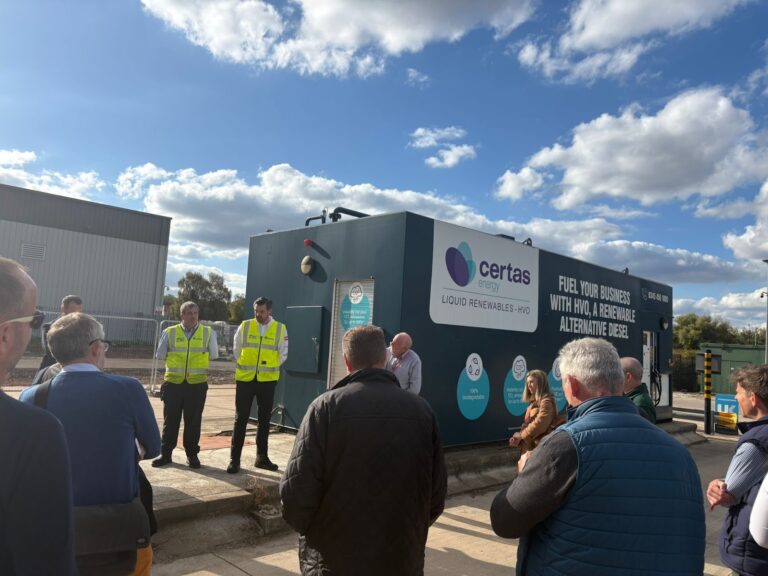
The site provides direct, pay-at-pump access to renewable HVO for HGV fleets and marks a significant step in scaling low-carbon liquid fuel infrastructure for road transport.
Unveiled to industry at the Motor Transport Decarbonisation Summit (23–24 September), the Tyseley bunker represents a new, HVO-only installation with fresh tanks and dispensing equipment designed to offer a replicable model for further rollout. Certas positions the site as a practical pathway for hauliers to cut scope-1 emissions immediately, with HVO a drop-in replacement for diesel that requires no engine modifications.
According to Certas, the opening aligns with growing market readiness: 65% of larger HGV fleets (100+ vehicles) are using or plan to use low-carbon fuels within five years, reflecting momentum behind alternative fuels in logistics. Birmingham’s wider climate agenda – targeting steep CO₂ reductions this decade – makes Tyseley Energy Park the ideal location choice.
The Tyseley HVO bunker expands Certas Energy’s national access to HVO at the pump, complementing an ongoing seven-figure investment programme to grow storage and supply across the depot network. Recent Certas Energy updates indicate an accelerating rollout with the company’s network expanding to more than 15 sites supplying HVO at the pump, helping to make low-emission transport more accessible throughout the UK.
Why it matters for fuel distributors and fleets
- Immediate decarbonisation : HVO can reduce net lifecycle GHG emissions by up to ~90% compared with fossil diesel, while leveraging existing fleet assets and refuelling behaviours.
- Bunker infrastructure signals scale: Moving from “available on request” to dedicated, public HVO pumps is a material infrastructure step that lowers adoption friction for mixed and third-party fleets.
- Ecosystem siting: Tyseley Energy Park hosts multiple alternative-fuel options, positioning HVO alongside hydrogen, biomethane and EV charging in a single logistics hub.
Image from Certas Energy
